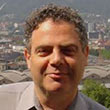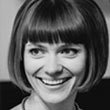Course instructors
Bertrand Meyer
Bertrand Meyer, formerly from ETH Zurich, is a professor at Politecnico di Milano and Innopolis University, and Chief Architect at Eiffel Software. He is an authority in software engineering, programming languages and object-oriented programming. He is pa…
Marco Piccioni
Marco Piccioni is a postdoctoral researcher at the Chair of Software Engineering, ETH Zurich. After having received a Ph.D. from ETH for his work on API usability, persistence, and object-oriented class schema evolution, his research interests are now foc…
Nadia Polikarpova
Nadia Polikarpova earned her PhD at ETH Zurich (Switzerland) in April 2014. Her research interests lie in the area of software correctness, at the intersection of formal methods and software engineering. In particular, her research has contributed to auto…



